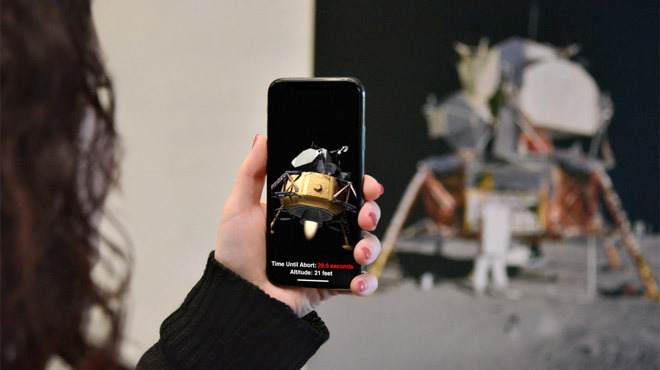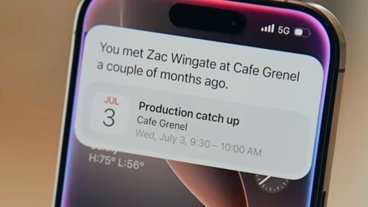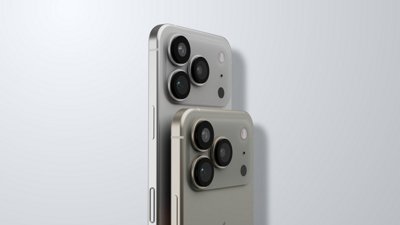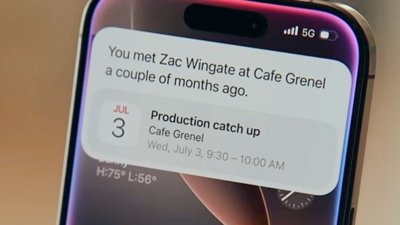Developers have been testing out Apple's ARKit 1.5 since the refreshed augmented reality platform saw release with iOS 11.3 beta last week, and a few early projects offer a glimpse into the technology's ability to detect vertical surfaces, images and more.
Apple announced ARKit 1.5 in a preview of iOS 11.3 last week, touting refinements to the AR technology that will allow apps to recognize vertical and irregularly-shaped surfaces. With the new assets, developers can place virtual objects on walls, doors, odd-shaped tables and more, capabilities that make the platform more robust and immersive.
Over the proceeding days, a number of developers have taken a crack at leveraging ARKit 1.5's new features, to varying degrees of success.
For example, a brief presentation created by London-based mobile app development studio Ubicolor shows ARKit's ability to detect vertical surfaces, in this case a brick wall. The short clip shows a virtual object, a disc designed to roughly mimic the brick surface, overlaid on the wall, then twisted and pulled out to reveal hollow shaft.
So I've been playing with the new ARKit wall detection today...what do you think?#arkit #madewitharkit #augmentedreality #iOS113 #arkit15 #ar #AugmentedReality pic.twitter.com/J9tj6sJf9S
— Ubicolor (@ubicolorapps) January 25, 2018
Another attempt by iOS developer Mohammad Azam demonstrates ARKit's image recognition capabilities. Using ARKit 1.5, Azam was able to create a program that detects a movie poster, pulls up a clip or trailer of that film and presents the video in an overlaid window.
Similar AR posters are already in circulation, but often require an embedded QR code or specialized imagery to work. Apple's solution would allow production houses to benefit from augmented promotional material without altering original graphics.
The Future of Movie Posters. ARKit 1.5 image detection and reference images. #ARKit #AugmentedReality pic.twitter.com/ruVxMCQtD3
— azamsharp (@azamsharp) January 30, 2018
Azam also applied the image recognition feature to book covers, which when properly configured and detected can act as triggers for the display of online e-commerce links.
Developer Tim Field created a module that shows iOS and ARKit detecting horizontal, vertical and irregular objects in real time.
New in iOS 11.3 - vertical & irregularly shaped surfaces with #ARKit pic.twitter.com/z54OuiIxuv
— Tim Field (@nobbis) January 24, 2018
Apple debuted ARKit in iOS 11 as a basis for its efforts in the augmented reality space. CEO Tim Cook has in past interviews extolled the virtues of AR, going so far as to say the technology has the potential to be as paradigm shifting as the App Store.
After an initial influx of ARKit apps, ranging from apps that position furniture within a user's house to games, the platform has hit a bit of a slow patch as developers look for new and novel ways to integrate the AR tech.
 Mikey Campbell
Mikey Campbell







-m.jpg)






 Chip Loder
Chip Loder
 Mike Wuerthele
Mike Wuerthele
 Malcolm Owen
Malcolm Owen

 Amber Neely
Amber Neely
 William Gallagher
William Gallagher



-m.jpg)






10 Comments
Yes Please.
The poster scanning thing is like the Star Wars app, wherein I scan some specific poster from another screen and it puts Storm Troopers in the room as AR.
This tech is supposedly different though.
The ad industry will go mental for this … unfortunately.
Nah, this has been possible for years with QR codes, Shazam and similar apps. I have seen maybe 10-20 of these things and that was years ago. This reduces friction by just using your camera app, but then still, look how crap it is to view a video like that...Maybe if it allows the video to open in a normal player..